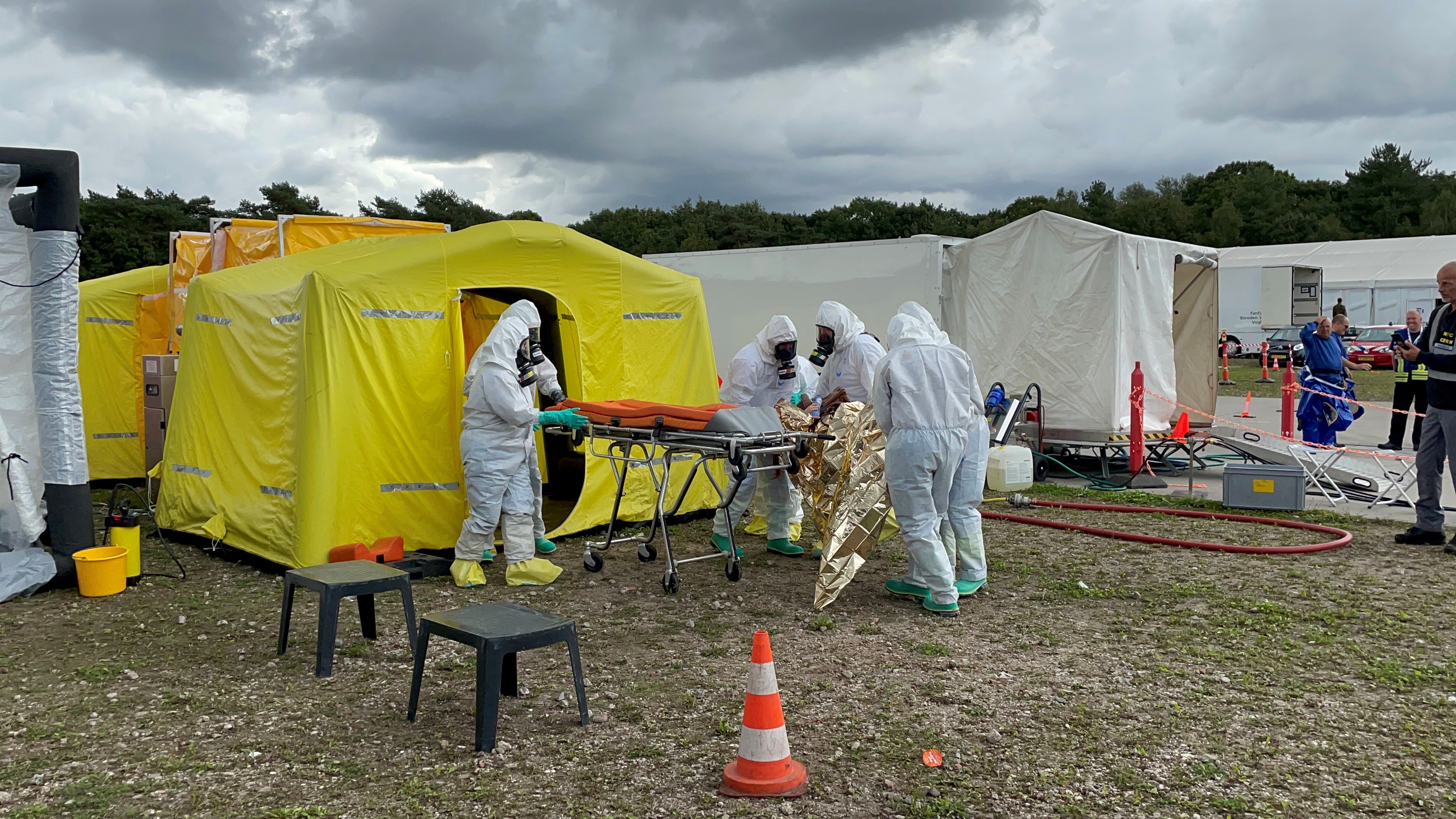A cross-sectoral exercise in the context of European project Bullseye
From the 20th until the 22nd of September, the Directorate of International Affairs of the National Crisis Center organised and coordinated the final cross-sectoral exercise in the context of the European Bullseye project. This exercise took place at the National Training Center CBRN in Vught, The Netherlands, and counted 195 participating practitioners.
What is Bullseye?
Bullseye is a project funded by the European Union and executed by a consortium of 8 partners from 5 different European countries: Spain, The Netherlands, Poland, Slovakia and Belgium. The National Crisis Center takes on the role of coordinator in this project.
The main objective of the project is to further improve the knowledge and skills of first responders in all EU member states, concerning emergency situations involving the release of chemical, biological, radiological or nuclear substances, possibly in combination with explosives (CBRNe). Consequently, the project aims to provide clear answers to the question of: ‘How to better prepare first aid workers for terrorist attacks using chemical and/or biological agents’.
To achieve this objective, the Bullseye project consists of two main components:
The first component centres around the development of a training curriculum for explosive detection dogs, and the expansion of certification centres for these service dogs. The Directorate of canine support (DACH) of the Belgian Federal Police, located in Neerhespen, Belgium, takes the lead here.
The second component focuses on establishing harmonised procedures for first-, second- and third-line responders in all EU member states.
- First-line responders comprises firefighters, police and emergency medical services with no or very limited knowledge of and training in CBRNe.
- Second-line responders are CBRNe-specialists from fire services, the police and the military, as well as special forces of the police and medical specialised services.
- Third-line responders consist of forensics, laboratories, CSI (Crime Scene Investigation) and DVI (Disaster Victim Identification).
As a first step in the project, several expert meetings have been held, and a gap analysis concerning first responders’ response to a CBRNe incident has been conducted. Subsequently, in the development of harmonised procedures, the Bullseye consortium organised workshops dedicated to each line, concluding with a multi-disciplinary workshop bringing together all three lines. During these workshops, draft procedures were prepared through the exchange of good practices, real-life experiences and needs.
In the following phase, these procedures were tested through the organisation of mono-trainings. The purpose of these training sessions was to test the procedures for each line separately in order to verify their applicability in the field. Afterwards, the participating practitioners, reviewers and relevant stakeholders gave their feedback to improve these established procedures.
The cross-sectoral exercise
After establishing the feasibility of the harmonised procedures in monodisciplinary trainings that focused solely on one specific line, the question remained whether all procedures also proceed optimally when the different lines have to intervene sequentially. To answer this question, the final cross-sectoral exercise was organised.
In this context, first-, second- and third-line responders gathered at the National Training Centre CBRN in Vught, The Netherlands, to test all the Bullseye harmonised procedures and to ascertain whether they are interoperable. This exercise aimed to verify a smooth sequence of the interventions executed by the different lines.

What was on the agenda ?
- On the first day, a first multi-disciplinary exercise was organised based on a scenario that was very similar to the one used during the mono-trainings. Each intervention was followed by a short feedback session to evaluate the execution and the implementation of the procedures. This intensive first day concluded with an informal networking moment.
- The second day, a second cross-sectoral exercise took place. However, this time the participating first responders did not know what to expect, as it involved a completely new, unknown scenario: a drone attack in a metro station with a chemical/radioactive agent causing multiple injuries and deaths.
- During the final day, both exercises were discussed, and the procedures were evaluated once more by all project partners, allowing to modify the procedures, if deemed necessary. The purpose of this debriefing was to establish and validate a final set of procedures for all three lines of first responders.
A valuable exercise
Overall, the participating practitioners were very enthusiastic about the course of the exercises. The cross-sectoral character of the exercise allowed the practitioners to test the interoperability and coherence of the procedures and to finetune coordination and communication, which was considered extremely valuable. Furthermore, the international dimension offered practitioners the opportunity to discover new or different tools that were used in the other countries.
What’s next?
Based on the exercise and ex-post evaluation, some adjustments are currently being made to the final set of harmonised procedures.
As a final step in the Bullseye project, a Train-the-Trainer toolkit will be developed containing a summary of the best practices and the finalised harmonised procedures that have been established. This toolkit will be presented to all EU member states, giving the opportunity to be implemented by other member states as well.
More information about the Bullseye project can be found on the following website: https://www.bullseyeproject.eu/





